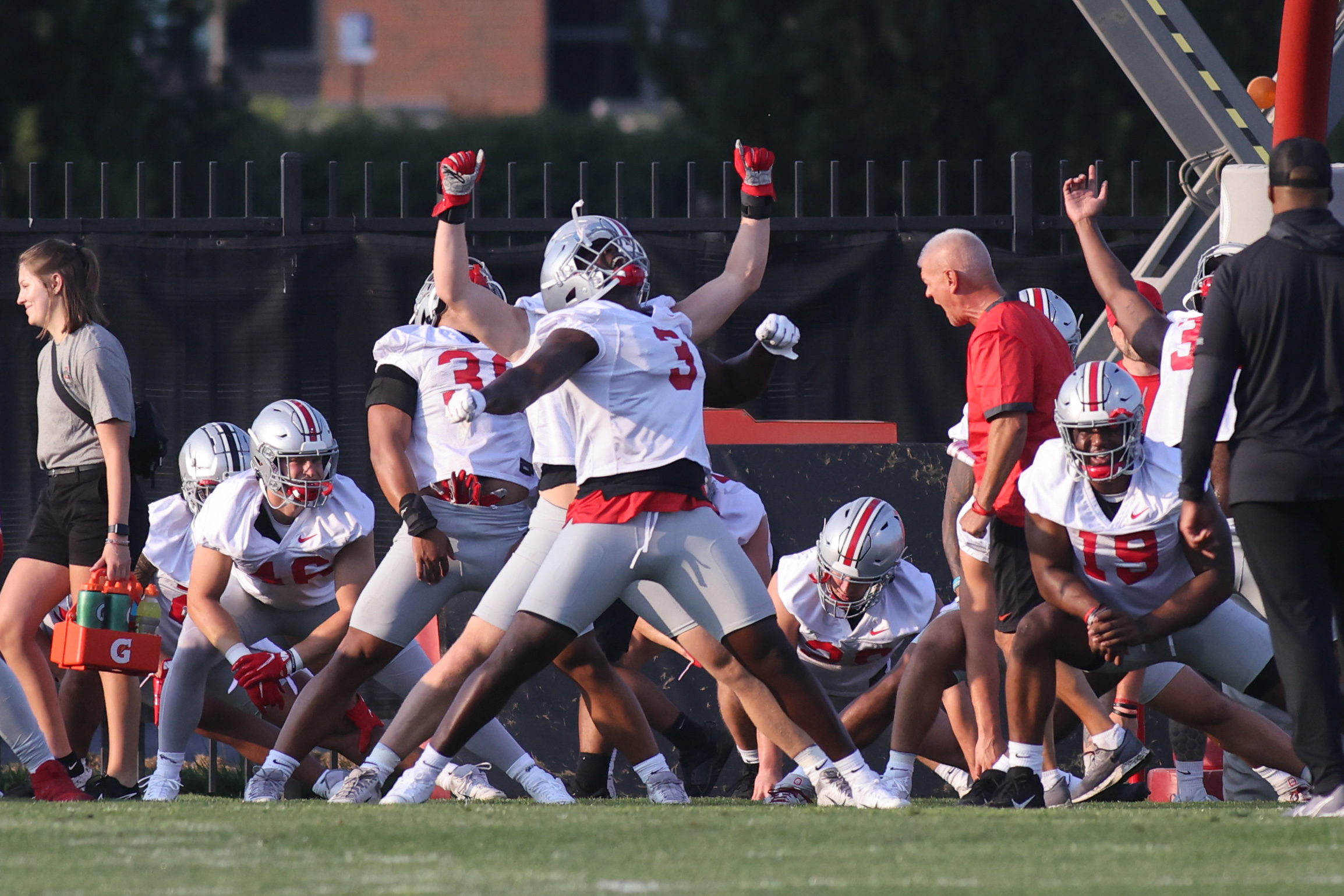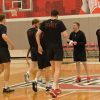
When Kerry Coombs was hired as Ohio State’s new defensive coordinator in 2020 away from the Tennessee Titans, his scheme flexibility was one of his biggest selling points. The 59-year-old first-time coordinator spent time coaching defensive backs in essentially every major modern defensive scheme, from Chris Ash’s quarters coverage in his first stint at Ohio State to Greg Schiano’s man coverage-heavy two-high look to Mike Vrabel’s zone blitzing scheme.
The theory was that with time spent in everything, Coombs could do a little bit of everything in Columbus, simplifying what he’s learned down into a concise playbook that allows Ohio State to vary its looks more than most college teams, while still freeing up its talent to play fast and loose.
Of course in year one, the expectations vastly exceeded the reality. Coombs stuck heavily to cover 3 and cover 1 looks, only started to work in a second-high safety at the very end of the season, and seemed generally overwhelmed in his first time as the defensive play-caller.
Instead of a jack of all trades, Ohio State got what was essentially a less ideologically committed version of Jeff Hafley, running that same single-high defense that Hafley did, but with significantly less technical ability and schematic mastery than the Boston College head coach had. Coombs was coaching a system that he didn’t know especially well, essentially.
How much of that falls to him, and how much of it goes to Ryan Day – who certainly seems committed to single-high as Ohio State’s base defense – is hard to determine and not really worth pursuing at this point, given that the 2020 season is in the rearview for the Buckeyes. Ohio State seems to agree. The early talking points of fall camp on that side of the ball have revolved heavily around playing the best players, rather than limiting the talent on the field to fit into a specific scheme. Coombs even made it a point to say that Ohio State’s personnel will be matchup based this season before anything else.
“A lot (will be) dictated by matchup,” Coombs told media. “I had a guy that played nickel in Tennessee but when the offense went 12 (one running back, two tight ends) personnel he played corner. It’s going to be based on our opponent and on our skillset. The best 11 players to win that play are going to be on the field for the Ohio State Buckeyes. And then the next play, it’ll be the same. We have a lot of good players here. We should have guys on the field that maximize their strengths to our defense, to matchup in the best possible way to our opponents.”
After his time in the NFL, which fields just 53-man rosters, Coombs is looking to really take advantage of the depth that he has at Ohio State, specifically in the secondary.
“The great news is at Ohio State you have a lot more players (than in the NFL). Now we have a lot of guys. (Every player) has a great role to play. I think the way to keep them happy, energized, healthy and fast is to play them. You’re not going to take a great one off the field, but at the same time, there might be a guy who has his 15 plays and they’re pretty good plays.”
If the potential changes on that side of the ball were exclusively camp talk, it would be hard to take them truly to heart. Ohio State has been saying that it will play freshmen, throw to the tight end or fulfill any number of fan pipe dreams in camp press conferences for years now. But this move seems to have some legitimacy to it. The Buckeyes have lost their top cornerback in Shaun Wade to the NFL, but the rest of the secondary returns with another offseason of development behind it.
The cornerback room, which was essentially decimated in 2020, boasts intriguing youngsters in Ryan Watts and Lejond Cavazos, blue-chip freshmen in Jordan Hancock and Jakailin Johnson and even sixth-year senior Demario McCall, who seems to be coming on quickly in his first season on that side of the ball. The linebacker room is similarly lacking in top-end proven talent but rich in depth, while the defensive line – easily the strongest unit on the defense, seems to have the opposite problem. If there’s ever a time for Ohio State to rotate its defenders around matchups, this is the team with which to do it – lacking in proven players but rich in potential contributors.
What the best 11 will look like for the Buckeyes, though, is still very much up in the air. There are a few players, like Coombs said, that are likely too good to take off the field: Josh Proctor comes to mind at safety, as does Cameron Brown at cornerback and Haskell Garrett at tackle, but Ohio State has the benefit of wildly different skillsets in essentially every position room.
A long receiver like Indiana’s Ty Fryfogle may give Sevyn Banks trouble but could be a much more manageable matchup for the 6-foot-3 Watts – while Penn State’s Jahan Dotson, at 5-11, looks like a much better fit for Banks. Ohio State’s more traditional linebackers could prove valuable against a run-heavy team like Oregon, but bullets Kourt Williams, Ronnie Hickman and Craig Young make much more sense against the pass-heavy Hoosiers.
“We love long players here. We love tall players,” Coombs said. “But they’ve got to be able to change directions, they’ve got to be able to play in space. And Ryan really does. We worked really hard on it in the offseason on being in a good football position with a good knee bend, being able to play tall. He can’t be short, and we don’t want him to be. So he’s going to play tall. We’ve worked really hard on what that looks like and what that feels like, and I’m really excited for his season.”
The big question for this coaching staff will be identifying those matchups and making bold decisions with personnel to properly account for them. In 2020, the new-look Buckeye staff wasn’t up for the task. In 2021, it has to for Ohio State to truly challenge for a national title.








